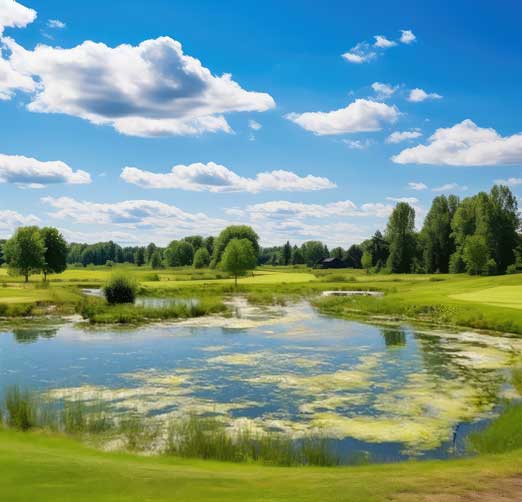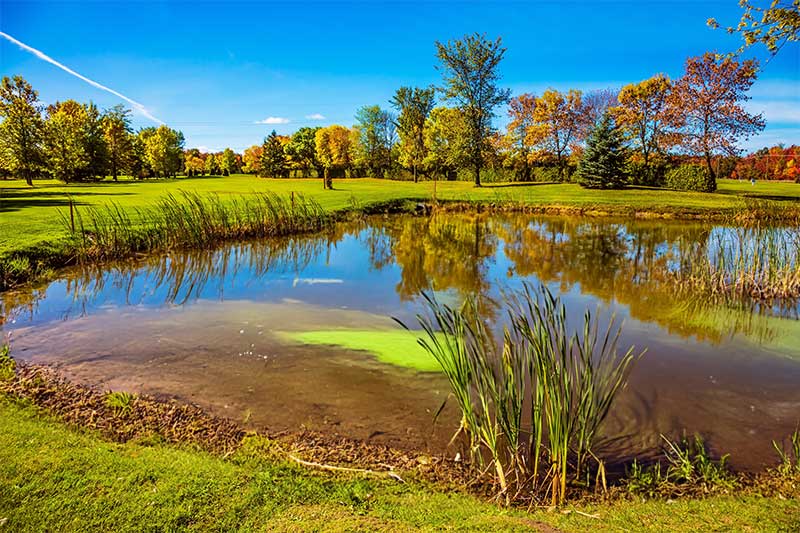REMOVE POND MUCK & CREATE A HEALTHIER POND
Pond Muck & Sludge Removal

Pond Muck & Sludge Removal
Pond muck removal is a crucial aspect of maintaining a healthy and balanced aquatic ecosystem. Over time, organic debris such as leaves, algae, fish waste, and sediment accumulate at the bottom of a pond, forming a thick, nutrient-rich sludge. If left untreated, this buildup can lead to poor water quality, foul odors, excessive algae growth, and oxygen depletion, ultimately harming fish and aquatic plants. Effective pond muck removal involves a combination of natural and mechanical methods, including aeration, beneficial bacteria treatments, dredging, and manual extraction. Understanding the causes, impacts, and best practices for muck removal is essential for pond owners seeking to enhance water clarity, promote biodiversity, and prevent long-term ecological damage. We will explore the science behind pond muck accumulation, practical removal strategies, and preventative maintenance techniques to ensure a thriving aquatic environment.
Scientific Explanation of Pond Muck
Pond muck, scientifically known as benthic sediment, is a layer of organic and inorganic matter that accumulates at the bottom of ponds over time. This sediment consists of:
- Decaying plant and animal matter
- Silt and clay particles
- Nutrients like nitrogen and phosphorus
- Microorganisms and their byproducts
- The accumulation of muck is a natural process, but excessive buildup can lead to various problems in pond ecosystems.
Reasons to do Sludge Removal
The accumulation of pond muck/sludge poses several significant challenges to aquatic ecosystems. As organic matter within the muck decomposes, it consumes oxygen, potentially creating anoxic conditions that can be detrimental to aquatic life. Furthermore, the muck releases nutrients such as phosphorus and nitrogen, which can fuel algal blooms and disrupt the pond’s ecological balance. Excessive muck buildup can also lead to habitat degradation by smothering benthic organisms and reducing spawning areas for fish. Additionally, the accumulating sediment decreases the pond’s water-holding capacity and can alter its thermal properties, further impacting the overall health of the aquatic environment. It can also speed up the development of cyanobacteria development.
Methods of Muck Removal
Mechanical Dredging: This method involves using specialized equipment to physically remove sediment. Hydraulic dredges use suction to remove muck, while mechanical dredges use bucket-like apparatus to scoop out sediment.
Biological Augmentation: This approach utilizes beneficial bacteria and enzymes to accelerate the natural decomposition of organic matter. These microorganisms break down complex organic compounds into simpler forms, reducing muck volume over time.
Aeration: By introducing oxygen into the water column and sediment layer, aeration stimulates aerobic bacteria that efficiently decompose organic matter. This process can be achieved through various methods such as diffused air systems or surface aerators.
Barley Straw Pellets and Natural Treatments: Barley pellets are a natural and eco-friendly solution for maintaining pond health and reducing organic muck accumulation. They work primarily through the slow release of beneficial compounds that aid in breaking down organic material.
Muck Removal Techniques
Pond muck removal is a critical aspect of aquatic ecosystem management, employing various techniques to maintain water quality and habitat health. These methods range from mechanical dredging, which physically extracts sediment using specialized equipment, to biological augmentation, which introduces beneficial bacteria to accelerate organic matter decomposition.
Aeration systems are often implemented to increase oxygen levels, stimulating natural breakdown processes and improving overall water circulation. In some cases, chemical treatments may be utilized to flocculate suspended particles, though this approach requires careful consideration of potential ecological impacts.
Hydro-raking, a technique that combines raking with suction removal, is effective for targeting specific areas of vegetation and muck accumulation. For long-term management, preventive measures such as nutrient reduction & control and regular maintenance are essential to minimize future muck buildup. The selection of an appropriate removal technique depends on factors including pond size, muck composition, budget constraints, and environmental regulations, often necessitating a customized approach for optimal results.

Pond Muck Removal Assessment
Ready to take control of your pond’s health? By taking this quick, easy assessment, you’re taking the first important step toward restoring your pond’s beauty and ecosystem. Answer the following questions, and a professional pond specialist will contact you to discuss your pond muck removal options.
